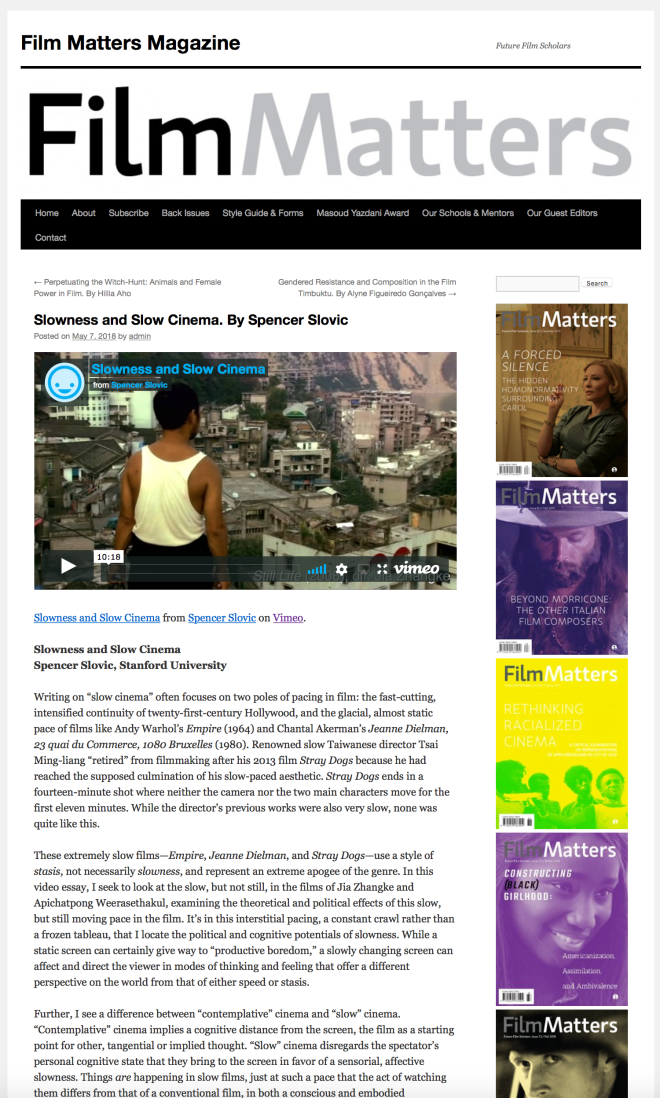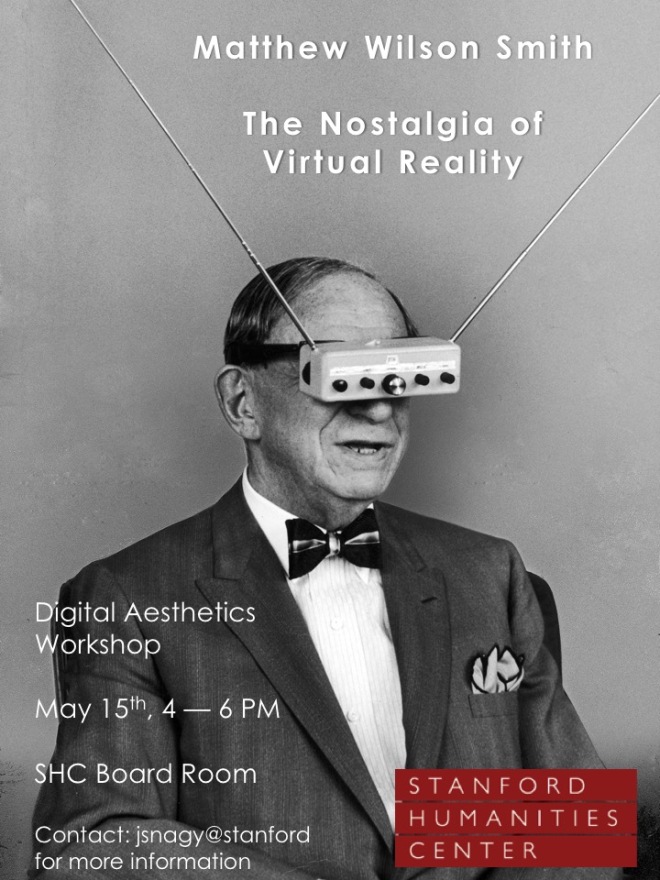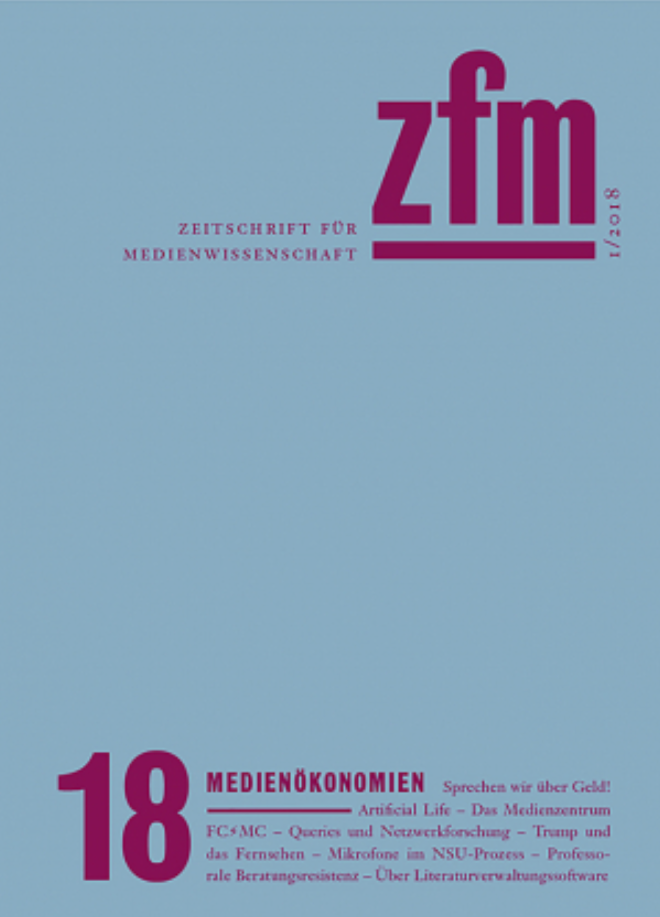
My student Spencer Slovic has just published an excellent video essay on “Slowness and Slow Cinema” at Film Matters, which will be of interest to people thinking about contemporary and world cinema, or simply interested in the medium of the video essay (and this is a very good one!).
Spencer’s video grew out of an assignment for my “Post-Cinema” seminar, which I taught in the winter quarter of 2017. An earlier version was featured in the exhibition I curated at Stanford, Post-Cinema: Videographic Explorations (you can still see all of the videos online).
In any case, the version featured in Film Matters is much improved, having gone through a rigorous peer-review process. Take a look!

